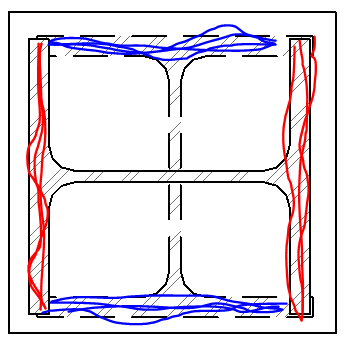suzpari
Civil/Environmental
- Jun 15, 2012
- 13
Hi! I have an existing steel structure on top of which another steel structure is being added at the roof level. In some cases I have new columns that will be supported by existing columns, and to connect the two, I'm going to weld the new column to it's baseplate, which is then welded to the existing column below. I think that's called a division plate..? What I'm unsure about is the design of the baseplate. I'm used to the typical scenario where the plate is fully supported by a concrete pedestal etc. But in cases like this, how do I determine the size and thickness of the plate when it's really only supported by the web and flanges of the column below? Also in particular, a case where the orientation of the new column is perpendicular to the existing column? Can anyone help me?

